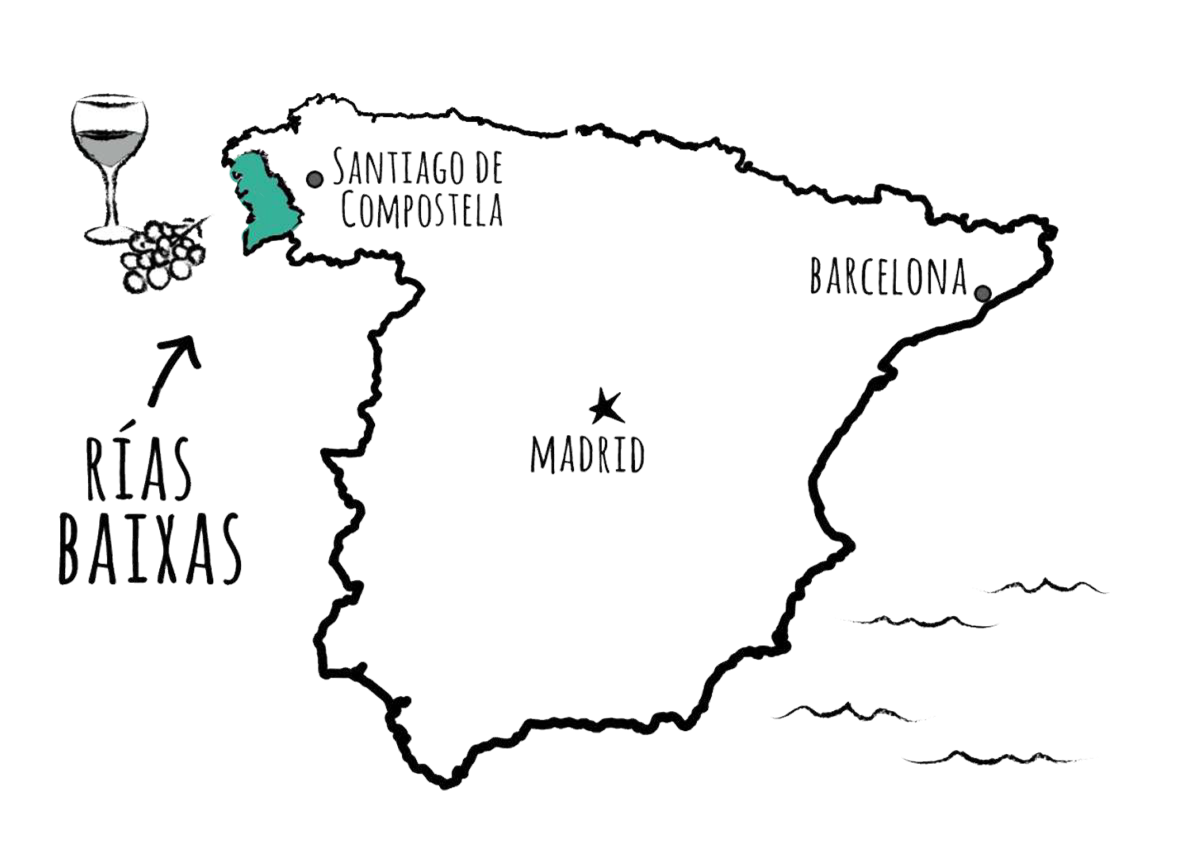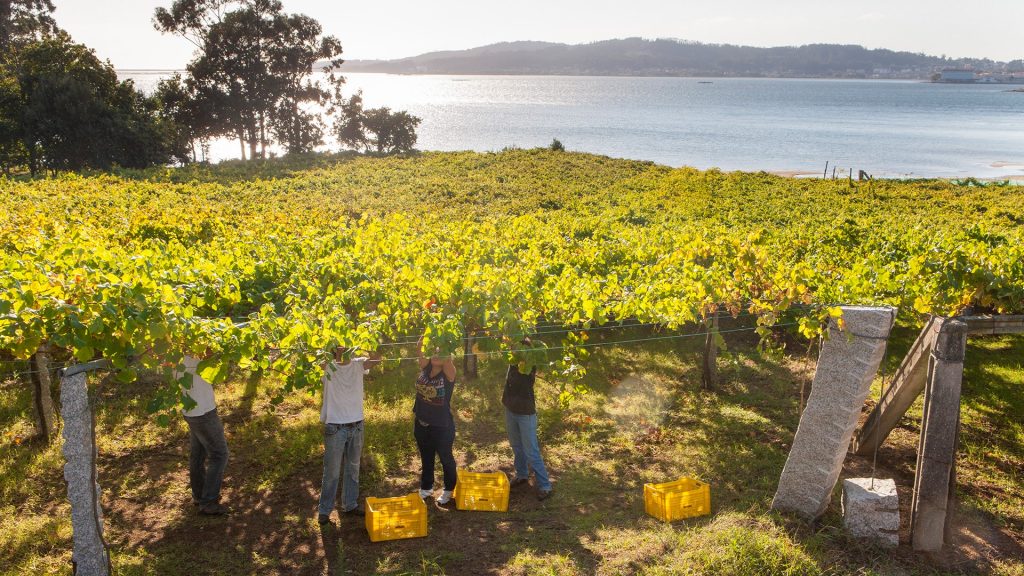Photo credit: Rías Baixas Wines (Spanish White Wines of Rías Baixas)
When most people think of Spanish wine, they imagine sun-drenched vineyards and bold, spicy red wines. Few consider the exciting Spanish white wines being made throughout the country today. One of the most exciting of which to emerge in recent years, is the crisp, aromatic Albariño.
Side note: This Spanish White Wines of Rías Baixas article was also produced as a sponsored video (in partnership with Rías Baixas wines). To watch, just scroll down to the bottom and click play. If you enjoy the video, consider subscribing (click here) to my YouTube wine education channel so you never miss an episode.
Experts agree that the finest vineyard region for Albariño is Rías Baixas. But what is it that makes Rías Baixas so uniquely suited to produce top-quality Spanish white wines?
Locating Rías Baixas
Rías Baixas has a winemaking tradition dating back to Roman times. The region is located on the northwestern coast of Spain, in Galicia. This part of the country is often referred to as Green Spain. With its cool, rainy weather and lush, emerald-green hillsides it is easy to understand why.
Visitors frequently compare Galicia to parts of Ireland or Scotland, not only for these landscapes but also the lingering architectural, cultural, and musical traces of its Celtic origins.
The wine growing area of Rías Baixas stretches along the Atlantic coast for roughly 100 kilometres, from due south of the famous Christian pilgrimage site, Santiago de Compostela, to the Portuguese border.
The Climate & Soils of Rías Baixas
Rías Baixas has moderate year-round temperatures. The combination of abundant sunshine, cooling Atlantic breezes, and regular rainfall leads to slow, even ripening and excellent acid retention in the grapes. This gives wines with racy acidity and pure, vibrant aromas.
The topography of the region is highly varied, with jagged inlets, shallow fjords, flat lands, and gentle slopes. Vineyard plots tend to be quite small. Indeed, the region has well over 5000 growers – often small family holdings passed down from generation to generation.
The growing areas of Rías Baixas are divided into five sub-regions which we will explore in more detail in an upcoming, part two of this series.
Granite and schist-based soils are common Rías Baixas with mineral-rich alluvial top-soil. The minerality from the soil and salinity from the Atlantic climate are hallmarks of Rías Baixas wines.
Albariño, A Noble Grape Among Spanish White Wines
A whopping 99% of Rías Baixas’ production is of dry, white wine. The vast majority of these wines are made from Albariño, which makes up 96% of the region’s plantings. Small volumes of other white varieties like Treixadura, Loureiro, Caiño Blanco are also grown here.
These secondary grapes serve as minor blending elements to add nuance to the wines. Minute quantities of top-quality traditional method sparkling wine and red wine is also made in Rías Baixas.
Albariño is a late ripening grape that thrives in Rías Baixas’ cool, sunny climate. To counter the region’s high humidity levels, the majority of vines are trained on pergola style wire trellises, affixed to granite posts, called “parras”. This vine training system allows breezes to circulate in and around the vines fruiting area.
Vinifying the Spanish White Wines of Rías Baixas
Most grapes are hand-harvested in Rías Baixas. A short cold soak on the skins is common before fermentation to enhance aromatic potential. Wines are then generally fermented in stainless steel, then aged on their fine lees for anywhere from four to nine months to preserve freshness and give a layered, textural mouthfeel.
As temperatures rise, many of Rías Baixas winemakers are moving away from full malolactic fermentation. This process converts harsh malic acid to softer lactic acid. Blocking this transformation keeps acidity levels high. This is vital in Rías Baixas. The bright acidity of the region’s Albariño is one its signature traits, making these Spanish white wines so popular.
When it is practiced, oak ageing (and in rare cases, fermentation in oak) tends to be reserved for premium cuvées. In these cases, large, neutral oak casks or smaller, seasoned barrels are used so that oak flavours don’t overpower the wine’s bright, fruity character.
A Dynamic, Empowered Wine Region for Spanish White Wines
Rías Baixas is an incredibly dynamic wine region. When the DO origin status was granted in 1988 there were just 14 commercial wineries. Now, there are almost 200 producers. And the Spanish white wines of Rías Baixas are served in wine-focused restaurants around the globe.
What’s more, women are leading the charge in Rías Baixas. More than half of the region’s winemakers and winery executives are women. Marisol Bueno, co-owner of Val do Salnés winery Pazo Señorans was instrumental in Rías Baixas achieving DO status and international recognition.
Tasting the Spanish White Wines of Rías Baixas
In general, Rías Baixas white wines are bone dry, with mouth watering acidity, medium body, refreshing salinity, and intense stone, citrus, and tropical fruit flavours.
Curious to try the three Spanish white wines of Rías Baixas presented in the video? Here are the producer’s and cuvée names:



